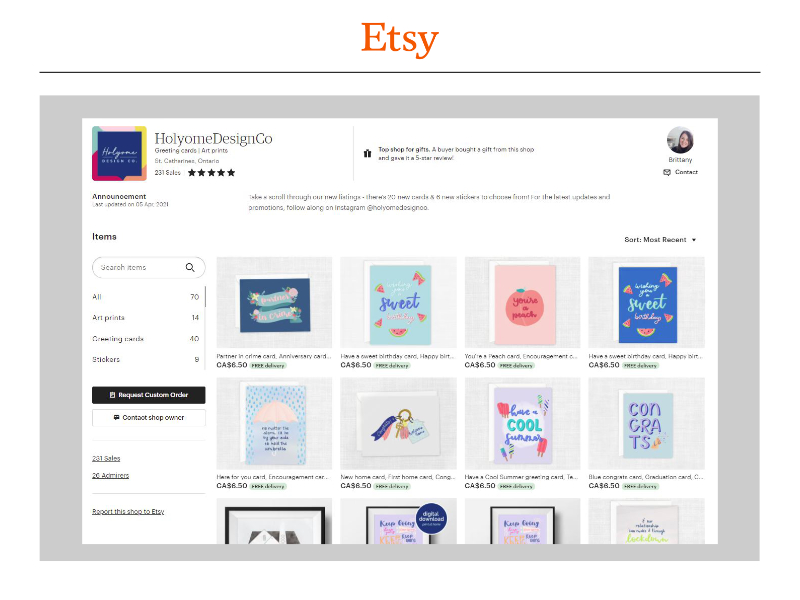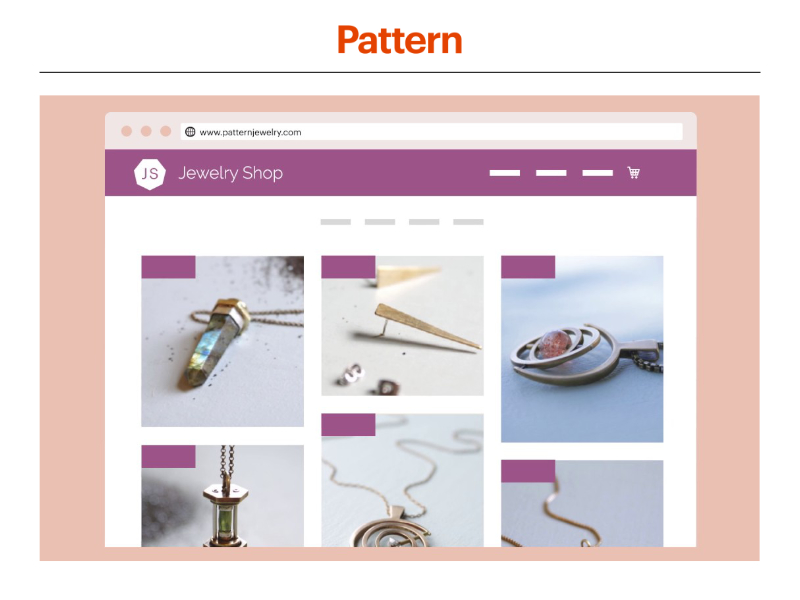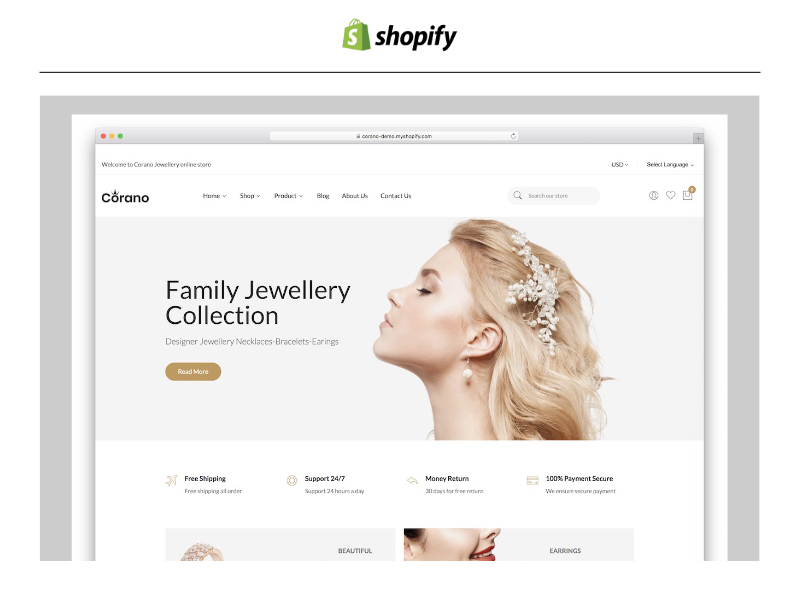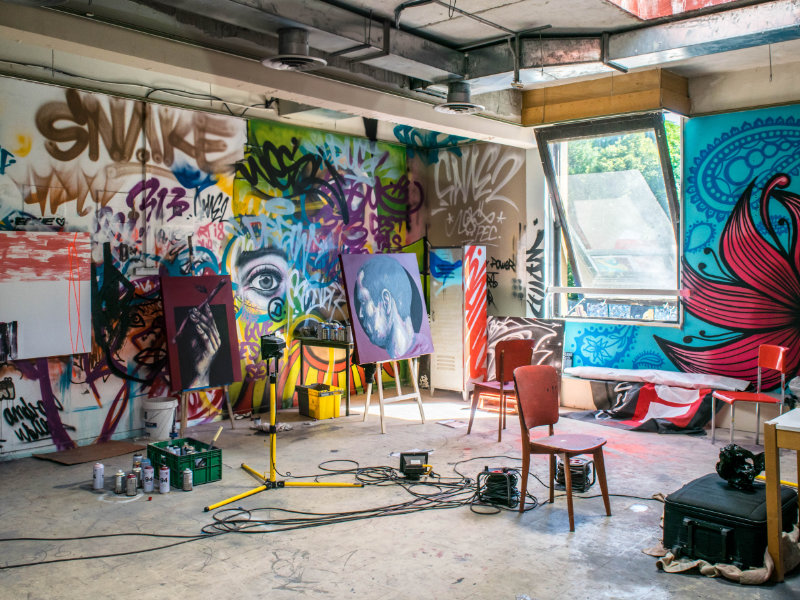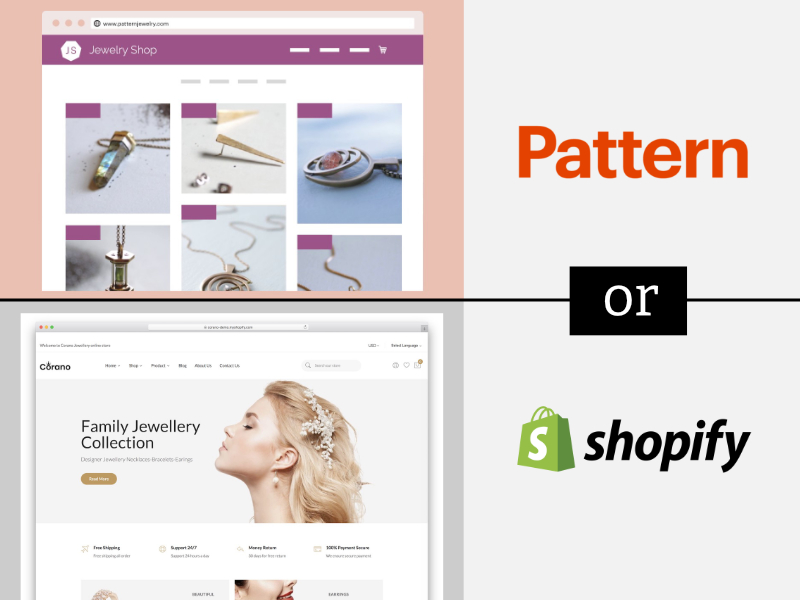
I recently made a Shopify version of my Etsy store and while it's a great tool I do find it tedious having to list and do SEO for everything twice.
I'm interested in using Pattern so I only have to list things once but from what I can tell everyone on here seems pretty down about it.
The most common argument against it seems to be that it's more sensible to have two sources of traffic rather than just Etsy. But won't there still be two sources of traffic as the Pattern site would rely on advertising and SEO in the same way Shopify would. It would still be two different sources for customers?
Having had a quick look at Pattern I think the templates look great and professional and at $15 per month is considerably cheaper than Shopify. The only downside I can see is that I won't be linked to Facebook so I wouldn't be able to post shoppable posts on Instagram.
Am I missing something?
First, let’s take a step back from this question. Before you consider building your own website with Pattern, Shopify, or whatever platform, you need to ask yourself this question: “why are you building a website?". A website is a very valuable sales channel for any eCommerce business. Besides being a place to make sales, a website serves as a place to build trust with your customers. It's an opportunity to tell customers who you are why they should care. Ultimately, a website is the home of your brand.
In this post, I will only compare Pattern and Shopify. This post will be helpful if you are thinking of building a website in addition to your Etsy store.
Understanding Etsy, Pattern, and Shopify
What is Etsy?
Etsy is the global marketplace for unique and creative goods. It’s home to a universe of special, extraordinary items, from unique handcrafted pieces to vintage treasures.
Source: Etsy.com
Etsy is a marketplace platform that connects sellers and buyers. It makes it extremely easy for anyone to setup an online shop. Like other marketplace platforms, the appeal comes from the traffic it can bring to sellers. Other examples that use a similar model is Uber and Airbnb. Marketplace platforms are known for having very low start-up costs and make transactional profit. The key to these platforms is the variety of providers who help drive traffic to the site, thus benefiting other providers (for example, you are a host on Airbnb, you tell others to check it out on Airbnb, and this exposes them to other hosts in your area. Similarly with Etsy, when you drive traffic to your Etsy store, you are also helping buyers discover other sellers).
What is Pattern by Etsy?
Pattern is an easy way to set up your own website for your brand, in addition to your Etsy shop. A website can give your business more exposure and help you reach new potential buyers outside of the Etsy marketplace. With Pattern, you’ll have access to a variety of tools that help you reach new buyers while strengthening your brand.
Pattern is an additional channel for your business. It does not replace your existing Etsy shop. If you choose to set up a website, we’ll automatically import most content and inventory from your shop. From there, you’ll be able to customize it for your site. Any changes you make on Pattern won’t affect your Etsy shop.
Source: Etsy.com
Pattern is a website builder by Etsy. It is ready to use right out of the box and connects to your Etsy store so you can sync inventory between the two very easily. Like other website builders, you pay a fixed monthly subscription fee. The biggest advantage of website builders is that you have more control of how your brand looks. However, this is not entirely true with Pattern. If you visit a Pattern site, you won’t see very obvious Etsy branding, however, there is a text at the footer that says “Powered by Etsy” (you can’t remove this). It costs $15 USD per month to have a Pattern store.
Unlike a marketplace platform, an independent website needs a lot of work put in to drive traffic to it. It requires a lot of investment in marketing to get your site known to customers.
What is Shopify
Shopify is a subscription-based software that allows anyone to set up an online store and sell their products. Shopify store owners can also sell in physical locations using Shopify POS, our point-of-sale app and accompanying hardware. If you’re a Shopify merchant with both an online and physical presence, your inventory and stock get synced so you can manage your store(s) from one account, on any device.
Source: Shopify
Shopify is also a website builder that is subscription-based and specializes in building eCommerce stores. You can have a lot more control of how your store looks and can build a unique brand. Shopify offers a lot more functionality with over 5,000 apps that can help you get more sales. Shopify costs $29 USD per month with its basic plan.
Considerations before you build your site
Cost
Do you have enough sales from your Etsy shop to help cover the monthly fee for at least six months? I say six months because it takes time to learn how to drive traffic to a site. Imagine if your city built a new museum. Are people going to show up just because it was built? The answer is no if there wasn’t any marketing done. Programming and marketing needs to be done over a period of time to generate enough awareness of the museum. Even then, a fraction of people who know will show up.
Getting Traffic
Do you have social media presence or an email list that you can leverage for traffic? A website is like an island. You will need to tell people about it for people to visit. Unlike a shop on a busy street that can be discovered by new buyers who happen to walk by, it’s quite hard for someone to ‘stumble’ onto your website. You need to do a lot of consistent marketing to get the word out about your store.
Saturation in your niche
If you sell items that are similar to many sellers on Etsy, then it might be a good idea to consider an independent site. If you look at the product page on Etsy and scroll down, Etsy lists other sellers who sell similar products. This is a huge killer of sale conversion because buyers will window shop different brands. When you sell on Pattern or Shopify, this won’t happen. It’s very much like having your own store where customers only browse your products.
Comparing Pattern with Shopify
| Pattern | Shopify | |
|---|---|---|
| Cost | $15 USD per month | $29 USD per month for the Basic plan |
| Inventory Management | Connects with your Etsy shop. If you make a sale on Pattern, the listing does not renew and you won't be charged listing fees. If you want to have it synced with your Etsy shop at all times, you will be charged a re-listing fee. | You can create a separate inventory for Shopify, or use a Shopify paid app to manage this automatically. |
| Platform Branding | The footer has a "Powered by Etsy" text that cannot be removed. | No Shopify branding on your site. |
| Design | 10 free themes that are ready to use. Limited configurations and customizations. | Over 100 themes available (free and paid). More customization features (this also means it has a higher learning curve). |
Benefits of Pattern
- Pattern costs 50% less than Shopify. If you are tight on cash, then Pattern might be a better place to start.
- Pattern is a low-risk way to learn if an independent website works for you. You might take 6 months to try different ways of getting sales there. If it doesn’t work out for you, then you didn’t have to spend too much money to find out.
- If you don’t want the hassle of managing inventory, then Pattern might make more sense since it easily syncs with your Etsy store inventory.
- If you are new to the idea of email marketing, Pattern might be a good way to learn how to do that. Since you aren’t spending so much time building your store, you can get right into building your e-mail list.
- The limited configuration of Pattern means it has a low learning curve. This means you can set this up fairly easily. Shopify offers a lot more features and functionality, this means you need to spend more time learning how to use it.
Benefits of Shopify
- The biggest advantage is not putting all your eggs in one basket. I’ve seen a lot of Etsy sellers complain about their Etsy store closing without notice. There are many reasons for this, such as selling trademarked items (e.g. Disney branded products, which is against Etsy rules). However, there are Etsy sellers who say that they haven’t broken any rules and still had their store closed. After contacting customer support, they were told it was a mistake and if they’re lucky, their store will be back up. In this case, Pattern would also close because it is tied to your Etsy account. It’s quite rare for me to hear about Shopify sellers having their stores close out of the blue.
- You have a lot of control over how your brand looks – Pattern offers 10 free themes you can use out of the box. Shopify has over 100 themes you can use (it’s a mix of free and paid themes). If you really wanted to, you could get a custom theme build from scratch since you can access the code of your site (you can’t do this with Pattern). Finally, there is no Shopify branding on your site. By default, the sites come with “Powered by Shopify” at the footer, but you have the option to remove this.
- Shopify has been very smart about integrating seamlessly with social media. You can link your Shopify inventory to your Instagram, and more recently Tik Tok (this is still in the trial phase for Canada). With Pattern, you would need to update your inventory on Instagram manually through Facebook.
Should you pick Pattern or Shopify?
To answer the question of this Reddit user, they are correct that it is a better strategy to have more than one channel to sell, instead of only relying on Etsy. Putting all your eggs in one basket is a risky idea when running a business. Building redundancy is a way to build resiliency. However, there is an added challenge with Pattern being tied to your Etsy account. As I mentioned before, Etsy sellers have had their stores closed without reason before. If this happens, then your Pattern store also closes. Using an external website provider, such as Shopify, Squarespace, Wix, or WordPress, is a much better idea if you are looking to reap the full benefits of having more than one channel of sales, while also protecting yourself from Etsy's arbitrary closures.
At the beginning of this article, I mentioned building a brand. What does that mean? A brand is an identity. To have an identity, you need your own space to build your name. Pattern unfortunately has the "Powered by Etsy" at the footer, and it's not something you can remove. I think that's a real shame because you pay Pattern a monthly fee, but they will not completely remove their brand on a website you pay for. Wix puts ads on your website if you are on the free plan. The moment you pay them for a monthly plan, they remove them completely.
Overall, Pattern is a good place to start learning about the efforts required to drive traffic to a website, but it should be considered as a steppingstone to using a separate website provider. If you are planning to create a website to build your own brand, you should aim to build it on a provider such as Shopify, Squarespace, Wix, or WordPress. No matter which option you go with, make sure you work on building your email list. In any business, you do not own your social media followers, you can only own your email list.
If you have a question you want me to answer on this blog, send them to me at hello@thebettermelon.com .
Comments


